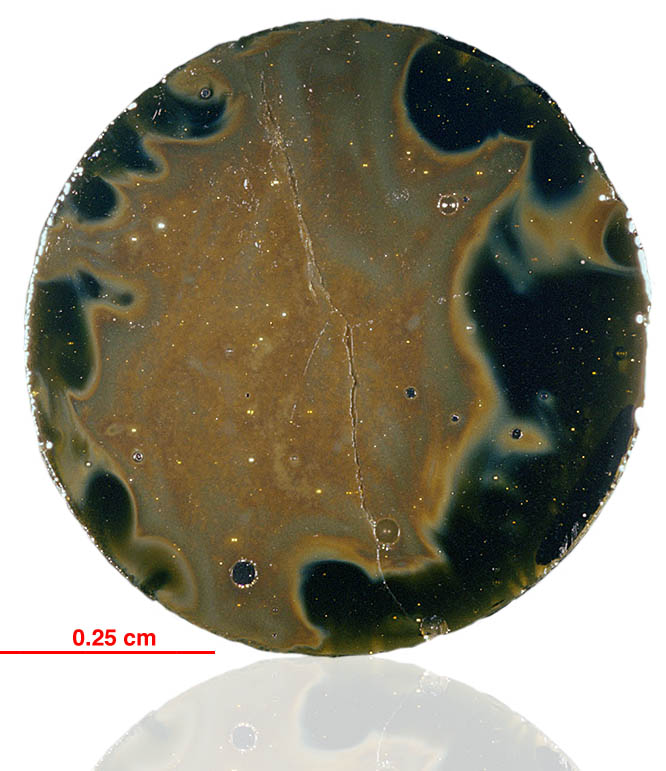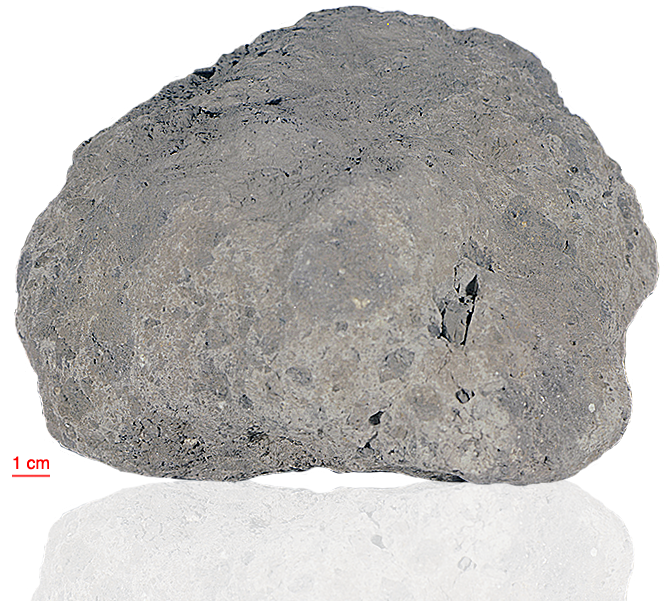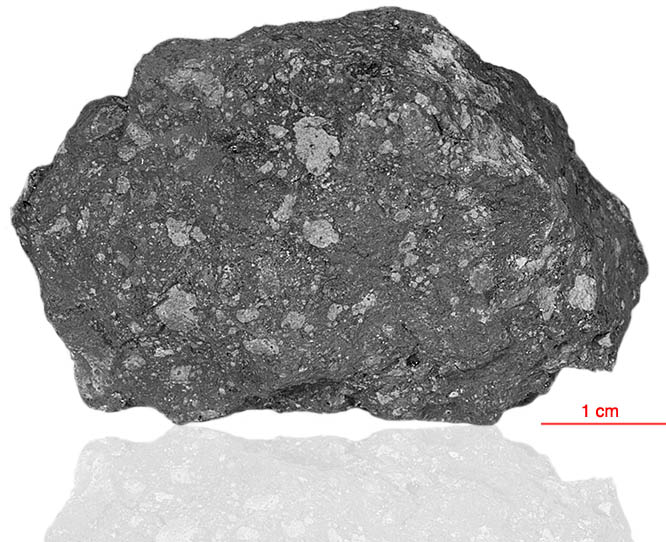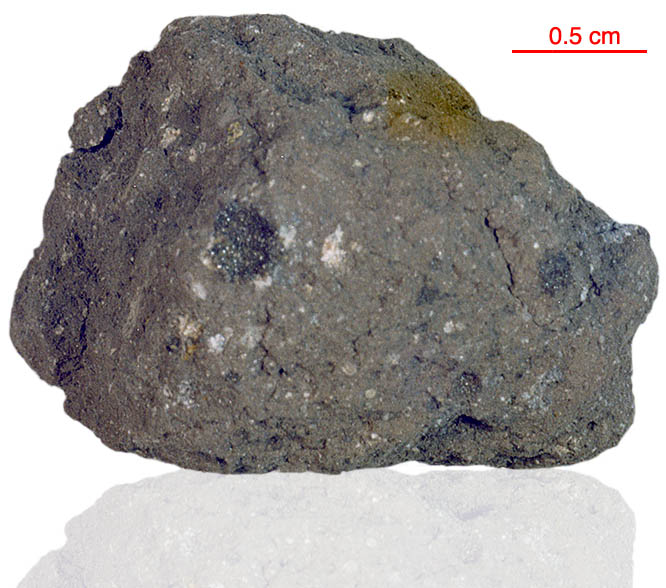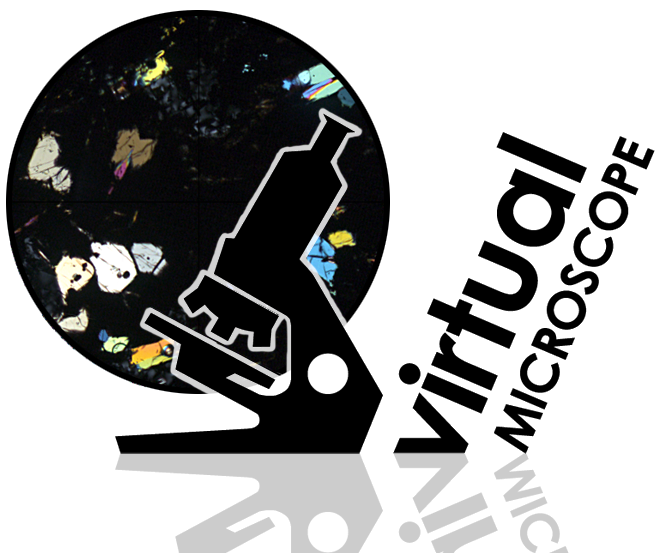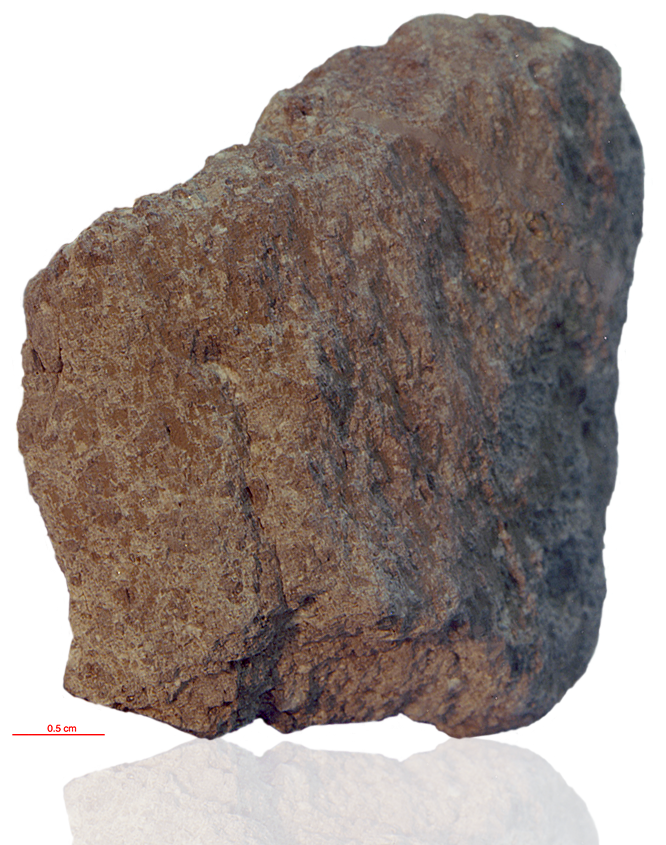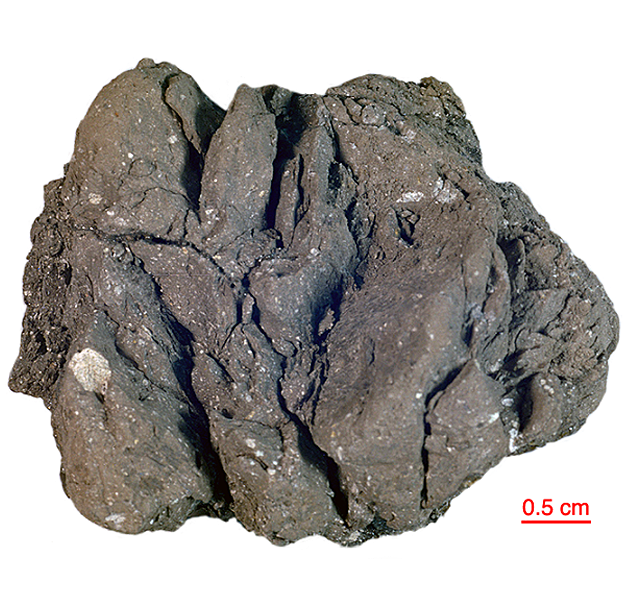
Fact sheet
14265 had a glass coating on one side and was pitted by micrometeorites on the other side as though the glass coating has eroded away. It may have been a glass bomb. It is mostly matrix with only small clasts. 14265 has numerous fractures, some glass filled. The thin section shows vesicular glass bonding small fragments of a polymict breccia.
The sample weighed 65.79 grams before analysis. It has not been dated.
Further details of this and other Apollo samples are here: http://curator.jsc.nasa.gov/lunar/
The Apollo 14 landing site was in a region formed by impact-basin debris.
Most of the 42 kilograms of rocks and soil collected on Apollo 14 are breccias (rocks that are composed of fragments of other, older rocks). In some cases, the rock fragments that form a breccia are themselves breccias. Such rocks obviously have experienced complex histories with multiple generations of impact events. Some breccias were heated enough that some of the material in the rock was melted.
Apollo 14 was launched on 31 January 1971.

